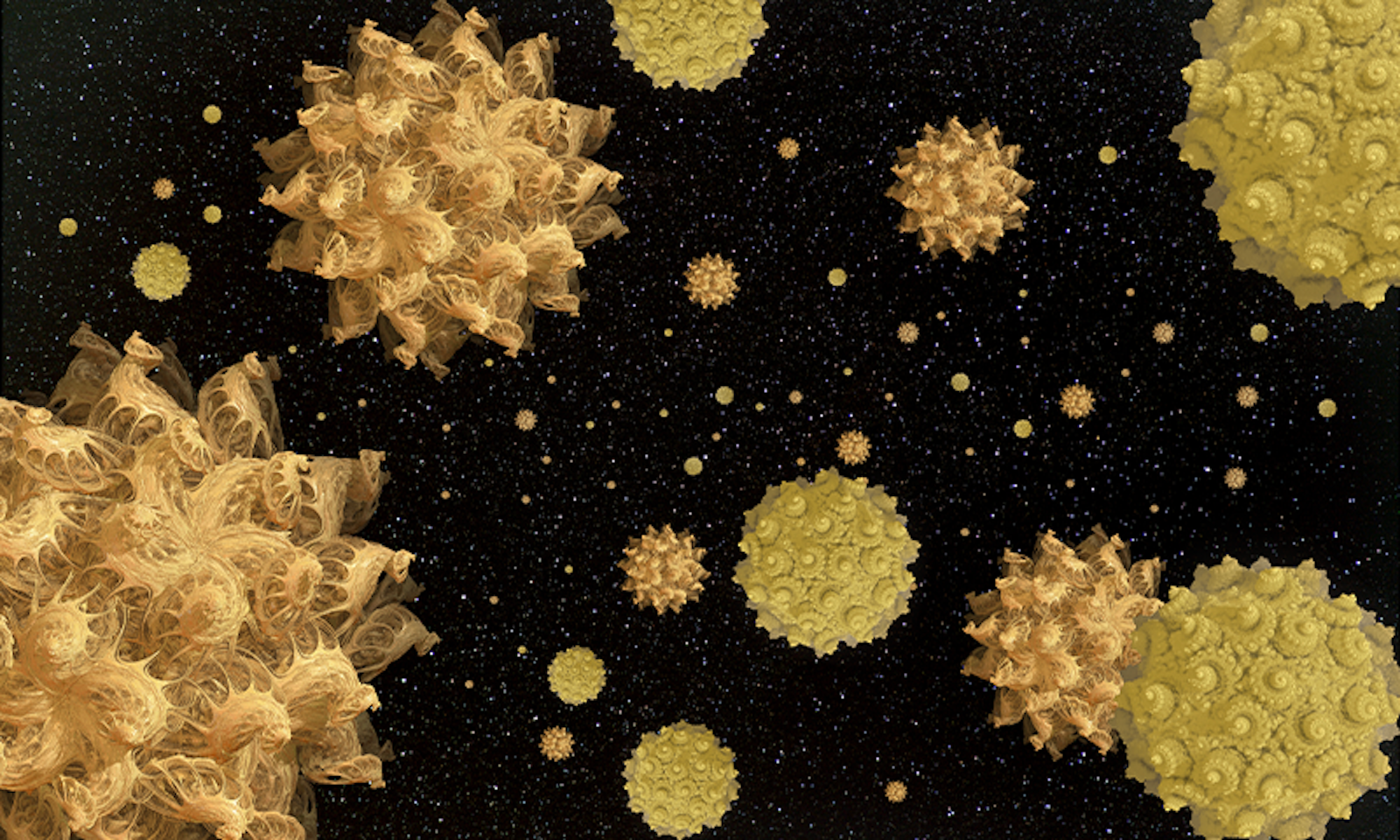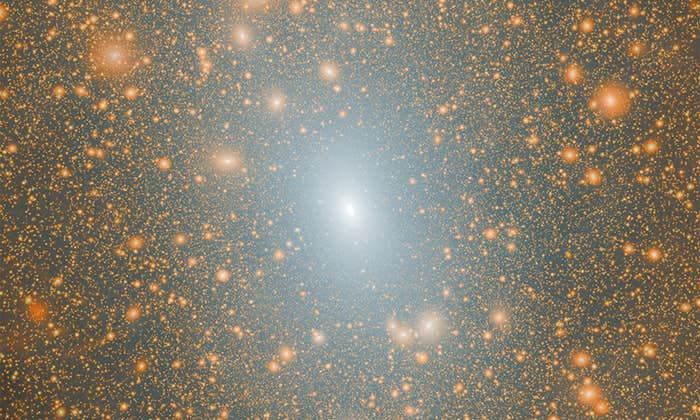Floating in the middle of our galaxy, near the center of the Milky Way, inside a cloud of gas that swirls at the temperature of 100 Kelvin or -279.67 Fahrenheit, a molecule essential to life on Earth has just been discovered. It sounds inconceivable that such a level of cosmic cold could harbor anything remotely related to a living organism—and yet it does. In fact, without this molecule, humans—and all other breathing, growing things on the planet—would not be possible.
The molecule, which scientists have been trying to detect in space for decades, is carbonic acid, a precursor to amino acids, the basic building blocks of proteins. Its chemical formula is H2CO3. Hardly a household name, carbonic acid nonetheless is key to our capacity to breathe: It ferrets carbon dioxide from our blood into our lungs, where it can be exhaled into the atmosphere. It also plays important roles in various geological processes on Earth. An excess of the molecule in the oceans can lead to ocean acidification. “So while it’s important to life itself, it’s even more important in several atmospheric and geological processes,” says Miguel Sanz-Novo at the Spanish Astrobiology Centre in Madrid. Sanz-Novo’s team confirmed the presence of carbonic acid in space for the first time, publishing their findings in a pre-peer review site called Arxiv.
The findings bolster Panspermia, the theory that life on Earth takes its origin from space and that our planet was “seeded” by various cosmic molecules that took a ride on meteors and meteorites, which later gave rise to organisms.
“The discovery of carbonic acid in space certainly tells us that the chemical ingredients for life are present out there, in the gas that will form new stars and planetary systems,” says Víctor Rivilla, the primary investigator on the project. “So yes, they could have been incorporated into solar system objects such as comets and asteroids, which could have transported them to the early Earth, thus helping to cook the life recipe.”
Our planet may have been “seeded” by various cosmic molecules.
Carbonic acid belongs to a larger group of carboxylic acids. Its close cousins formic acid and acetic acid were first spotted in space in 1971 and 1997, respectively. Scientists suspect that H2CO3 exists in various astronomical environments such as the Galilean icy moons, Mercury’s north polar regions, or even on the surface or atmosphere of Mars—but its presence in space was harder to pinpoint. “This molecule was thought to exist in space somewhere, and now our investigation showed that it is in fact there,” says Sanz-Novo—in the gas from which new stars and planets will eventually form. Moreover, it seems to be quite abundant, Sanz-Novo adds.
Floating inside a cloud named G+0.693-0.027 about 100,000 light-years away from Earth, carbonic acid molecules weren’t easy to discern (researchers used spectroscopy to identify them). Inside that cloud, the molecule exists in a high-energy state, which allows it to do things that it could never do on Earth: For example, as it spins in this high-energy state, it emits photons—massless particles that comprise waves of electromagnetic radiation—with a set frequency. That frequency becomes its spectral fingerprint or a mugshot, explains Sanz-Novo. Detected by two telescopes, at IRAM and Yebes observatories in Spain, and printed on paper, the fingerprint looks almost like a QR code.
Even here on Earth, H2CO3 is not easy to study because in ambient settings of temperature and pressure it easily breaks apart into carbon dioxide and water. To obtain a spectral fingerprint of the molecule in the lab to compare to the telescope’s data, the team also had to get the molecule to a high-energy state so it would start spitting out photons.
The findings aren’t only interesting from the perspective of where life came from, Rivilla adds. They also hint that we may have cosmic neighbors—the comets and asteroids most certainly took the molecules to other planets where they could develop into other life forms. “We all want to know how life could have appeared on our planet—and also if it is or is not a unique event,” he says.
The findings add another piece to the puzzle of whether we are alone in the universe—or not. ![]()
Lead image: MarcelClemens / Shutterstock




























